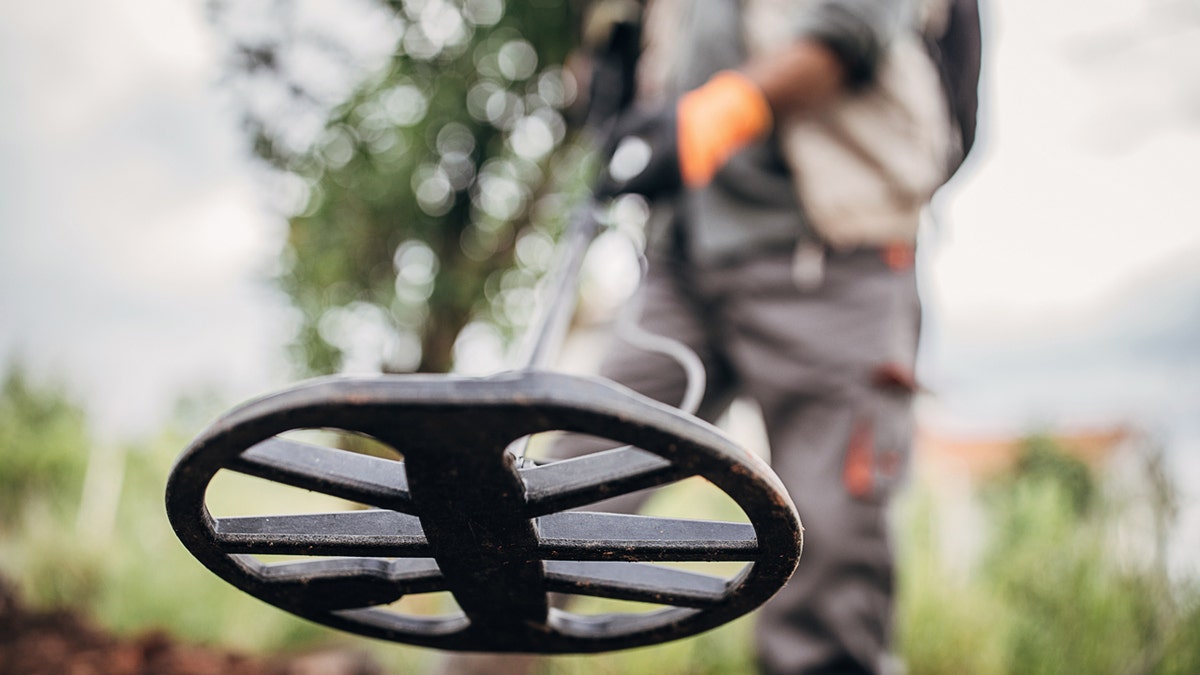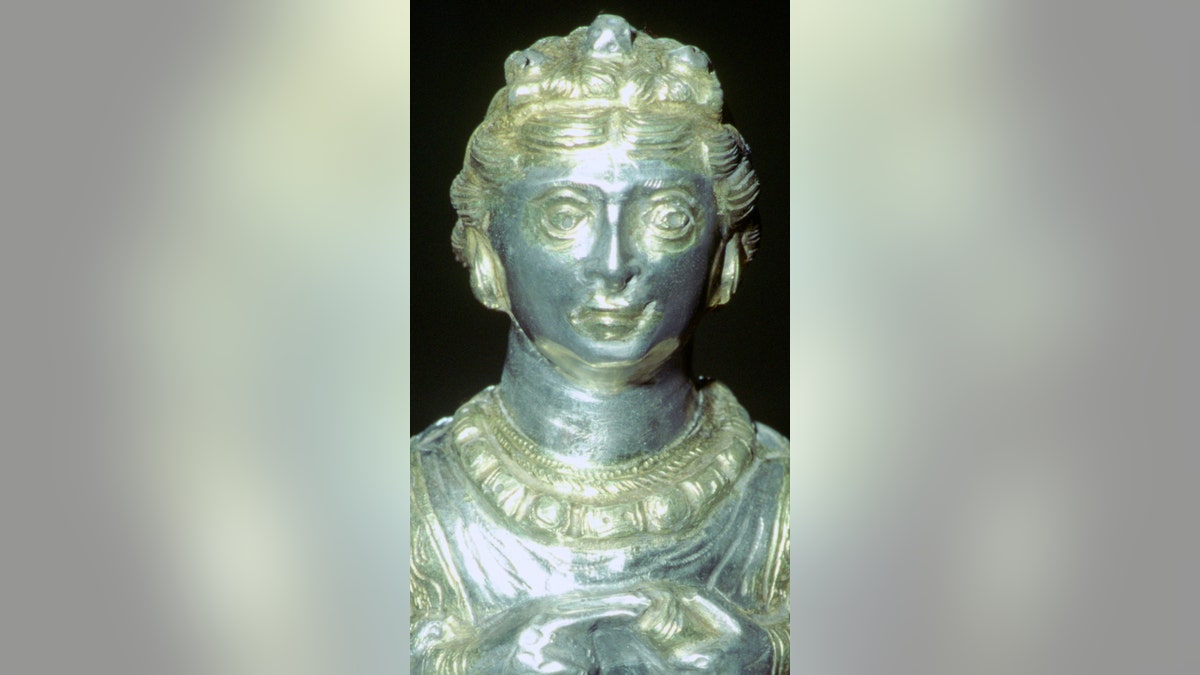The Hoxne Hoard was discovered more than 30 years ago, by a man looking for a lost hammer

The Hoxne Hoard is one of Britain’s most unique archaeological finds, not only in its quantity, but also in the manner in which it was found.
Various sources note the Hoxne Hoard as the largest collection of Roman treasure ever found in Britain. The hoard is made up mainly of gold and silver coins, although other objects, such as tableware and jewelery were also found.
How this collection of ancient treasures was found adds to its beauty.
The Hoxne Hoard is made up mainly of coins. (CM Dixon/Print Collector/Getty Images)
THE RUINS OF SANCINGDUI WERE FOUND BY A FARMER’S MISTAKE; THERE ARE OVER 60K RELICS
On November 16, 1992, Eric Lawes was exploring a field in the village of Hoxne in Suffolk, not hunting for hidden treasure, but simply looking for a hammer that had been lost in the world.
Lales was scouting the area with his metal detector, when he came across a small piece of treasure within what would become the Hoxne Hoard.
After shoveling out some of the silver spoons and gold coins he found, he immediately reported that what he had found had been well dug.
Laws was awarded £1.75 million for his find, and shared it with the farmer who owned the land where the gems were found, according to Smithsonian Magazine.

While looking for a lost hammer with a metal detector, a man found a much larger one. This find later became known as the Hoxne Hoard. (Stock)
4,000 ITEMS IN THE STAFFORDSHIRE HOARD MAKE THE COLLECTION THE LARGEST OF ITS KIND IN HISTORY
The next day, Suffolk County Council Archeology Service (SCCAS) was on the scene, according to the World History Encyclopedia.
The gold and silver artifacts that are part of the Hoxne Hoard weigh a total of 60 kilograms, according to Ancient Origins. There are about 15,000 Roman coins as part of the collection, according to the British Museum, where many of the items are on display today. The objects were buried in the 5th century AD
Other unique finds include pieces of jewelry, such as a body chain, six necklaces, three finger rings and gold bracelets, according to the source.

There were many pieces of jewelery found as part of the Hoxne Hoard, including gold bracelets. (CM Dixon/Print Collector/Getty Images)
MOTHER, SON HOLDS AN OLD THING HE USUALLY FINDS NEAR THE BURIAL GROUND WHEN IT IS POWERFUL.
Even though the Hoxne Hoard is made up mostly of coins, one of the most famous treasures found was the “Empress” pepper pot. This pot was one of four excavated at the site, according to the British Museum. The pepper pot is intricately designed to represent a woman.
Additionally, there were many tableware items that were part of the hoard, including a set of 19 spoons, in good condition, that were decorated with nautical themes, according to the British Museum.
Archaeologists believe the Hoxne Hoard was buried before 450 AD, according to Ancient Origins.
At the end of the 4th century AD, the western Roman Empire was in a state of uncertainty, when the Roman army withdrew from Britain, leaving the citizens to fend for themselves.

Another important Hoxne Hoard find is the pepper pot shown above. (CM Dixon/Print Collector/Getty Images)
CLICK HERE FOR THE NEWS PROGRAM
Although experts have made various theories as to why the pile was buried, one common suggestion is that it was done for protection, with the intention of the owners recollecting their valuables. In the case of the Hoxne Hoard, the items were not claimed by their owners.
Today, the Hoxne Hoard is on display at the British Museum in London. The display contains many coins, jewelry and tableware, as well as Lawes’ hammer, which he had been looking for when he made the most important discovery.
Source link




